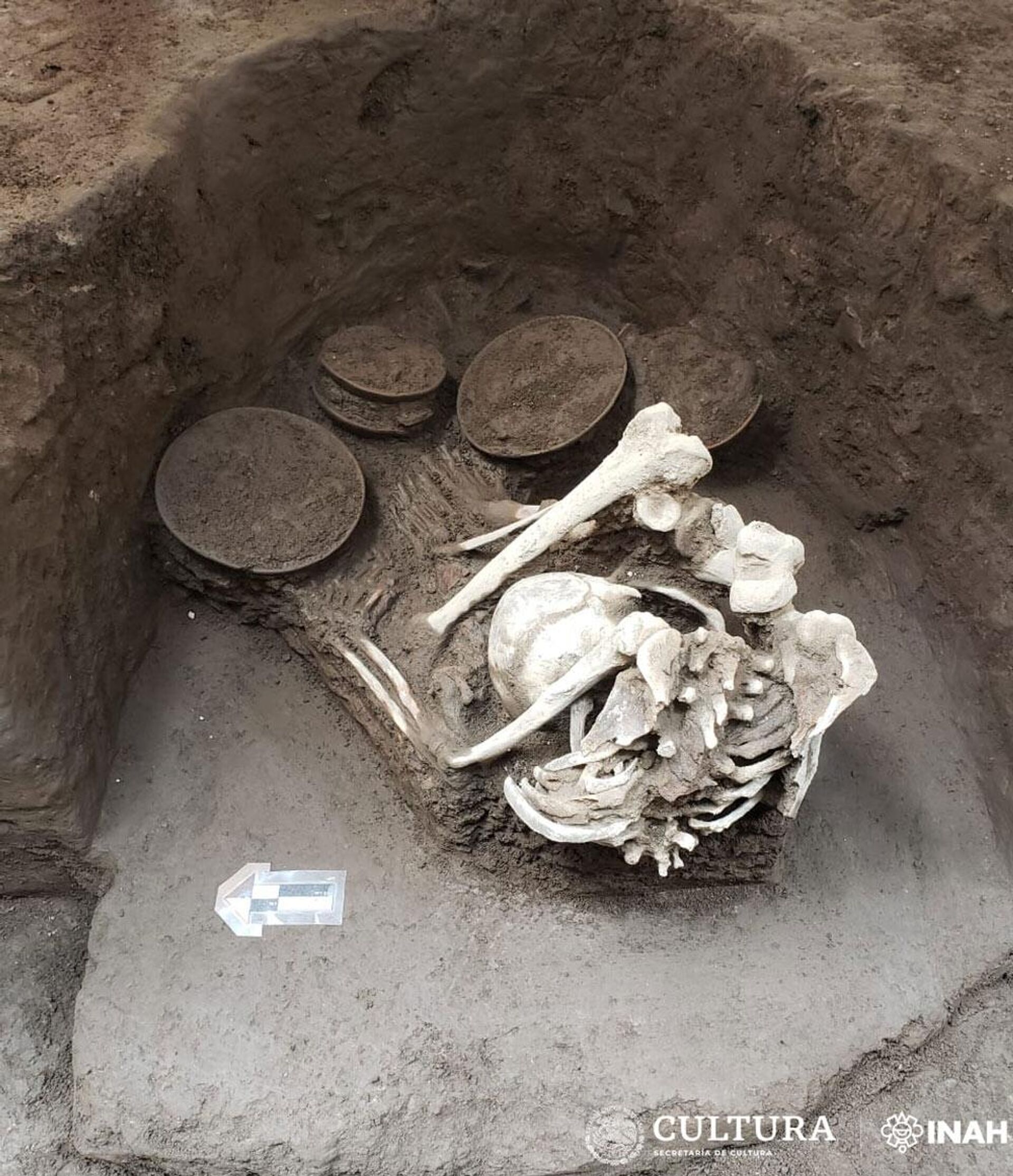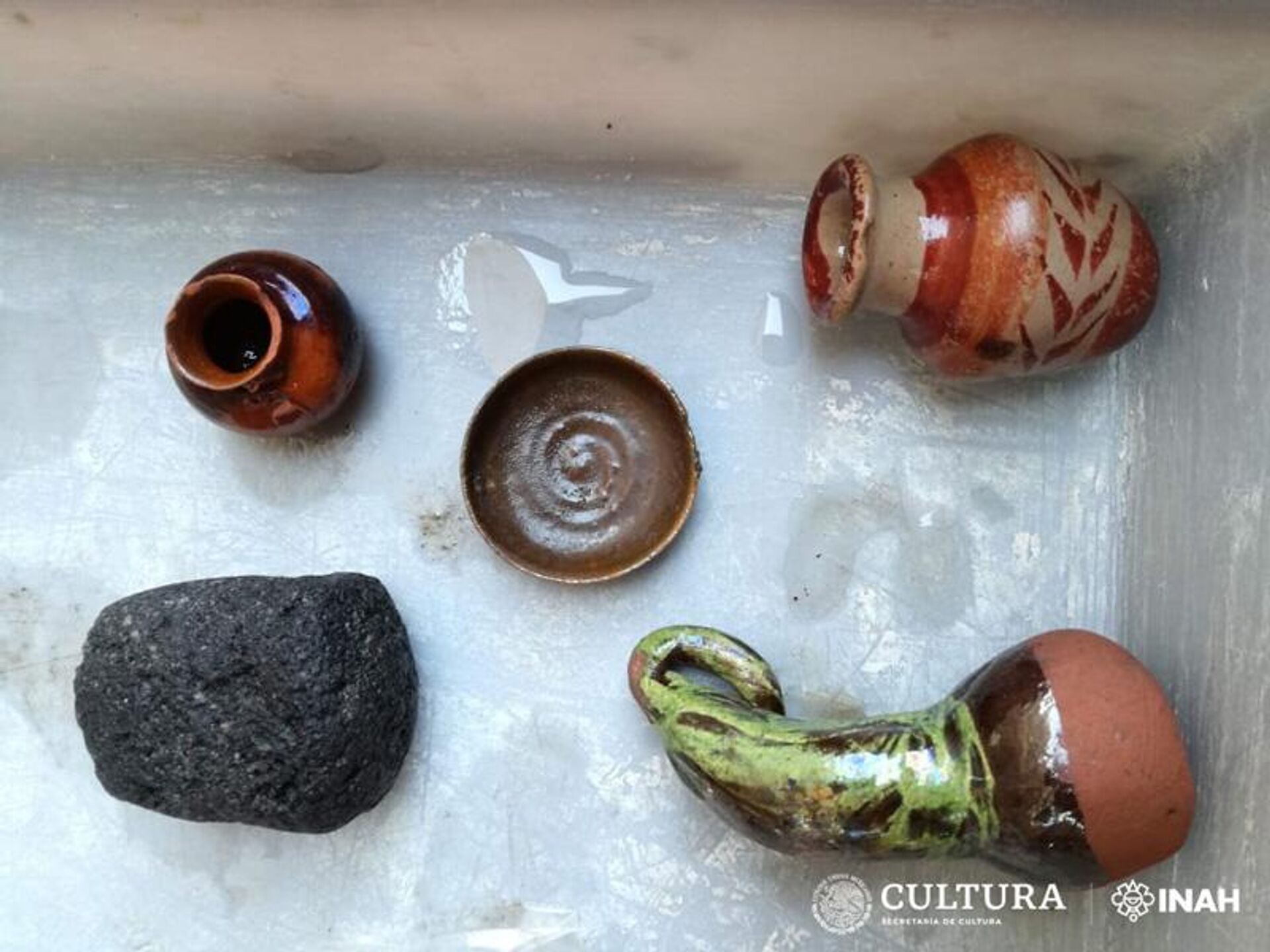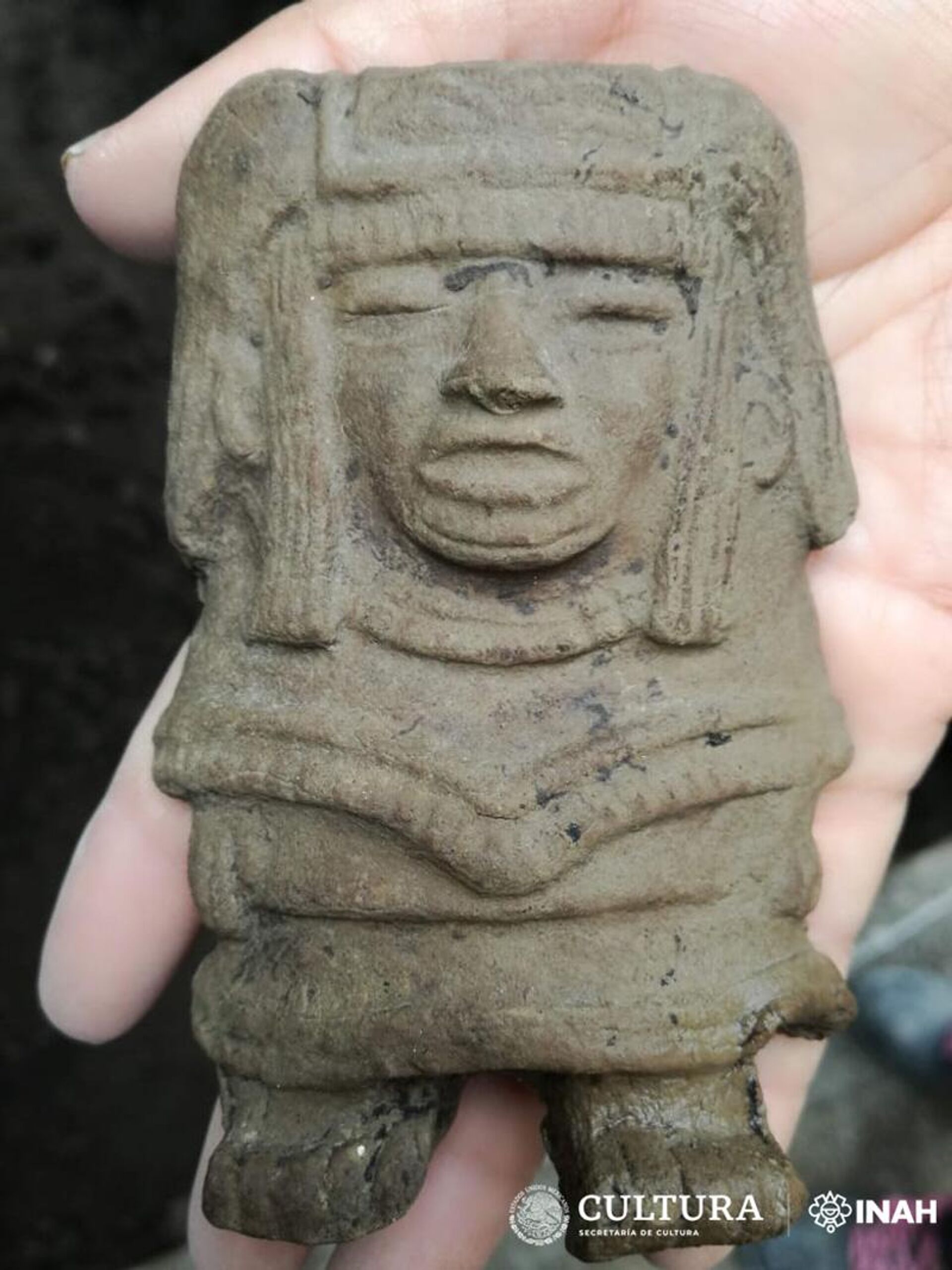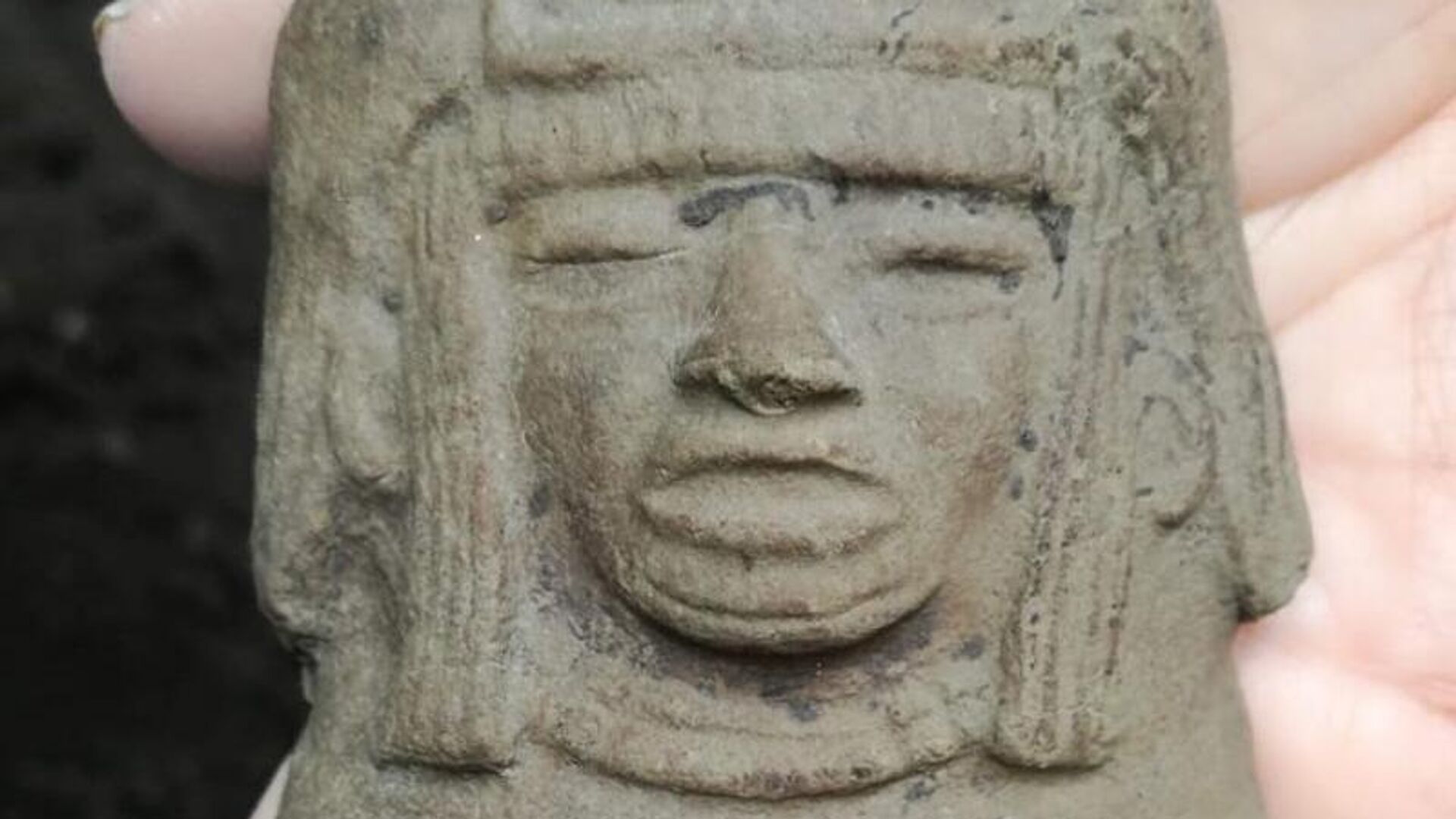Photos: Ruins, Burial Site of Ancient Pre-Aztec Village Discovered Under Mexico City
Subscribe
Archeologists have uncovered a major new find in Mexico City of a village that existed roughly 1,500 years ago, long before the Aztec Empire was founded.
The village was found near modern Tlatelolco, once a city in its own right but today part of the urban expanse of the Mexico City metropolis. It is located about 25 miles to the southwest of Teotihuacan, an ancient city-state that was once the dominant political force in the Valley of Mexico.
The village, which has been dated to between 450 and 650 CE, was one of many small towns that fell under the suzerainty of Teotihuacan, which at that time was the largest city in the Western hemisphere with an estimated population of at least 150,000 people. The village would have been located on the shores of Lake Texcoco, the largest of the lakes that once dominated the Valley of Mexico and sustained multiple empires and up to a million people at a time.
The archeologists uncovered canals, floors, tamping, stone foundations, post holes and an artesian well, along with a host of ceramics that were used to more precisely date the site. They also found the burial places of three people: one teenager and two adults.

Burial of an adult Teotihuacan individual uncovered by Mexico’s Ministry of Culture and a research team from the Directorate of Archaeological Salvage of the National Institute of Anthropology and History
Incidentally, the town was first reported by archaeologist Francisco González Rul in 1960, who recognized some vestiges of ancient architecture at the site during the construction of more modern buildings.
However, it was only in March 2023 that Mexico’s Ministry of Culture and a research team from the Directorate of Archaeological Salvage of the National Institute of Anthropology and History actually decided to unearth the site.
"With these new findings, the existence of a Teotihuacan occupation village in the Tlatelolco area has been consolidated and demonstrated," said lead archaeologists Juan Carlos Campos Varela and Mara Abigail Becerra Amezcua, according to a news bulletin by the ministry.

Pottery found at a Teotihuacan archeological site, 6th century CE

Stone figurine found at a Teotihuacan archeological site by Mexico’s Ministry of Culture and a research team from the Directorate of Archaeological Salvage of the National Institute of Anthropology and History

A small clay figurine found at a Teotihuacan archeological site by Mexico’s Ministry of Culture and a research team from the Directorate of Archaeological Salvage of the National Institute of Anthropology and History
"The complexity of the evidence recovered allows us to consider that the economy of this village would not have been only self-subsistence and gathering, but mixed production, with a surplus lake use, perhaps based on hunting together with an artisanal production of ceramics or stone, possibly specialized, since several fragments of solid and articulated modeled figurines, green stone objects, shells, funerary offerings and various obsidian and flint projectile points were found,” the two experts said.
The predominance of Teotihuacan ended in the 7th and 8th centuries CE, although archaeologists are divided as to whether the cause was related to natural phenomena - weather changes or volcanic eruptions - or due to foreign invaders.
However, many of its massive structures have persisted, including the Temples to the Sun and the Moon and the Temple to the Feathered Serpent. The center of political gravity soon shifted to Tula and the Toltec culture in the northwest, which persisted until the 13th century CE and the forging of a new Triple Alliance by the Mexica in Tenochtitlan, who the Spanish conquistadors recorded by the name they were known to by outsiders: the Aztecs.


